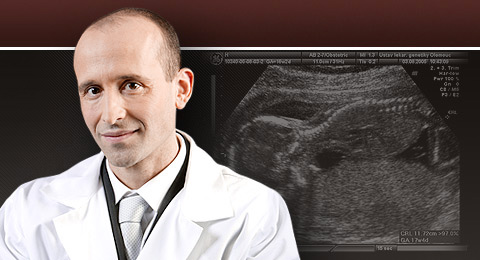Procházková J., Dhaifalah I., Měchurová A., Pilka R., Šimetka O., Slavík L., Úlehlová J., Ľubušký M., Procházka M. Monitoring of endothelial activation markers during physiological pregnancy
ABSTRACT
Aim of the study: To establish endothelial activation markers which could uncover endothelial damage during physiological pregnancy. Type of study: Prospective study. Method:We examined 403 pregnant women with a physiological pregnancy. Venous blood samples were collected from the women at the beginning of the pregnancy, a second sample was collected in the interval 24-28 weeks gestation. Parameters were examined using methods: t-PA – ELISA, PAI-1 – ELISA, vWF Ag – EIA ePCR – ELISA, MMP-2,9 – ELISA with fluorogenic detection, TIMP-2 – ELISA, endothelial microparticles - flow cytometry. Results: The level of vWF antigen increased during the entire course of pregnancy (in the I. trimester the average level was 152,32%, in the II. and III. trimester 173.34% and 216.20% respectively). At the same time, vWf activity also increased (I. trimester average level 130.20%, II. and III. trimester 150.09% and 181.91% respectively). The level of thrombomodulin significantly increased during pregnancy (I. trimester average level 19,05 ng/ml, II. and III. trimester 28,47 ng/ml and 39,86 ng/ml respectively). The level of soluble form of EPCR increased during pregnancy (I. trimester average level 201.76 ng/ml, II. and III. trimester 274.68 ng/ml and 324.07 ng/ml respectively). The level of PAI–1 increased during the entire course of pregnancy (I. trimester average level 36.14 ng/ml, II. and III. trimester 50.07 ng/ml and 60.12 ng/ml respectively). The level of t- PA did not change significantly during the course of pregnancy (I. trimester average level 2.48 ng/ml, II. and III. trimester 2.97 and 3,34 ng/ml respectively). The levels of MMP-2 (I. trimester average level 9043,76 RFU, II. and III. trimester 9315.38 and 8800.27 RFU respectively), MMP-9 (I. trimester average level 8371.90, II. and III. trimester 8290.81 and 7470.50 respectively), TIMP-2 (I. trimester average level 92.5 ng/ml, II. and III. trimester 98.5 and 96.5 ng/ml respectively) or endothelial microparticles (I. trimester average level 3838.38 particles/μl, II. and III. trimester 3836.59 and 3650.59 particles/μl respectively) did not change significantly throughout the individual trimesters. Conclusion: We confirmed the hypothesis regarding the significant influence pregnancy has on changes in levels of these markers. Key words: endothelium, pregnancy, activation, preeclampsia.

Contact
Professor Marek Lubusky, MD, PhD, MHA
THE FETAL MEDICINE CENTRE
Department of Obstetrics and Gynecology
Palacky University Olomouc, Faculty of Medicine and Dentistry
University Hospital Olomouc
Zdravotníků 248/7, 779 00 Olomouc, Czech Republic
Tel: +420 585 852 785
Mobil: +420 606 220 644
E-mail: marek@lubusky.com
Web: www.lubusky.com


